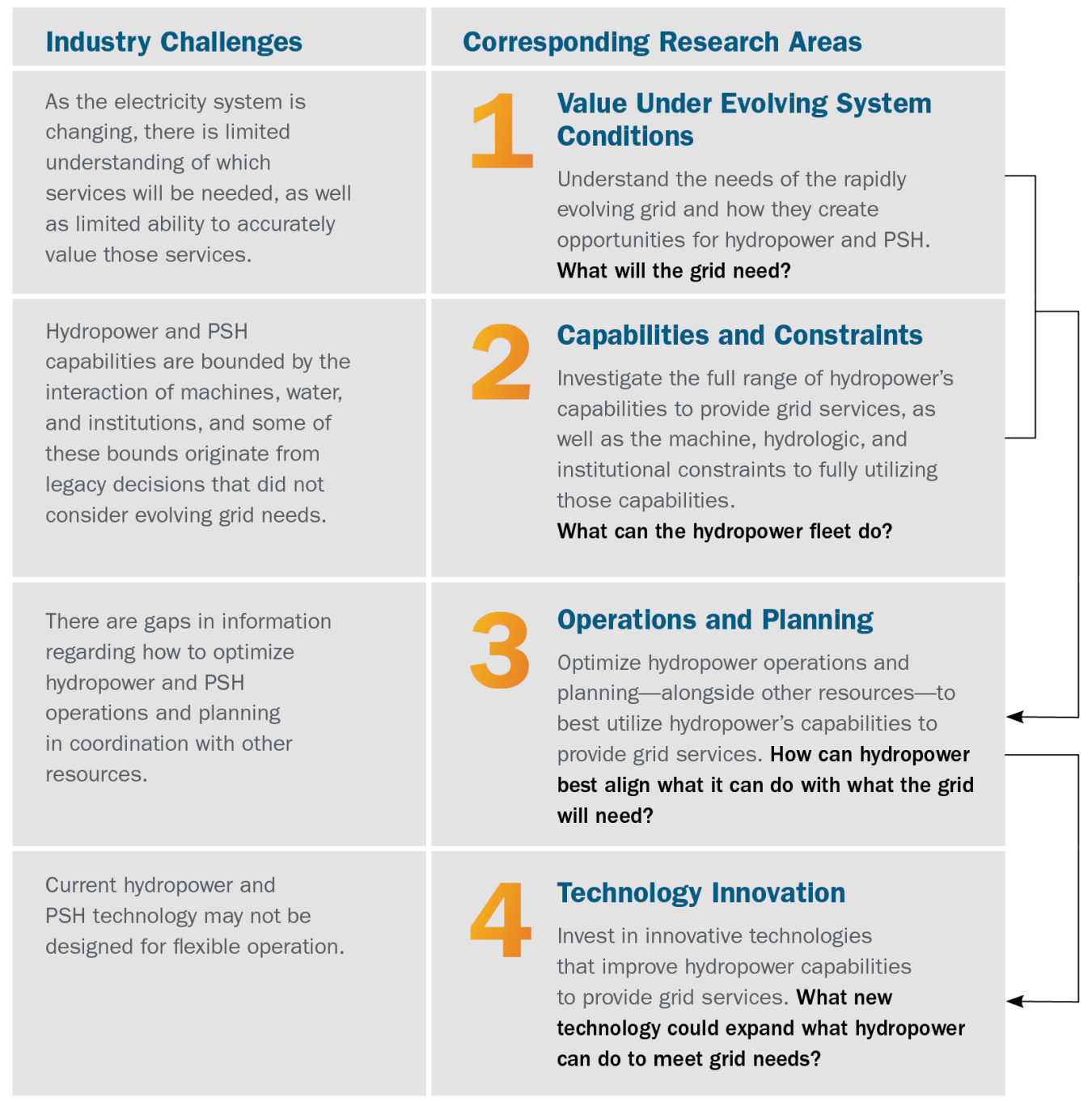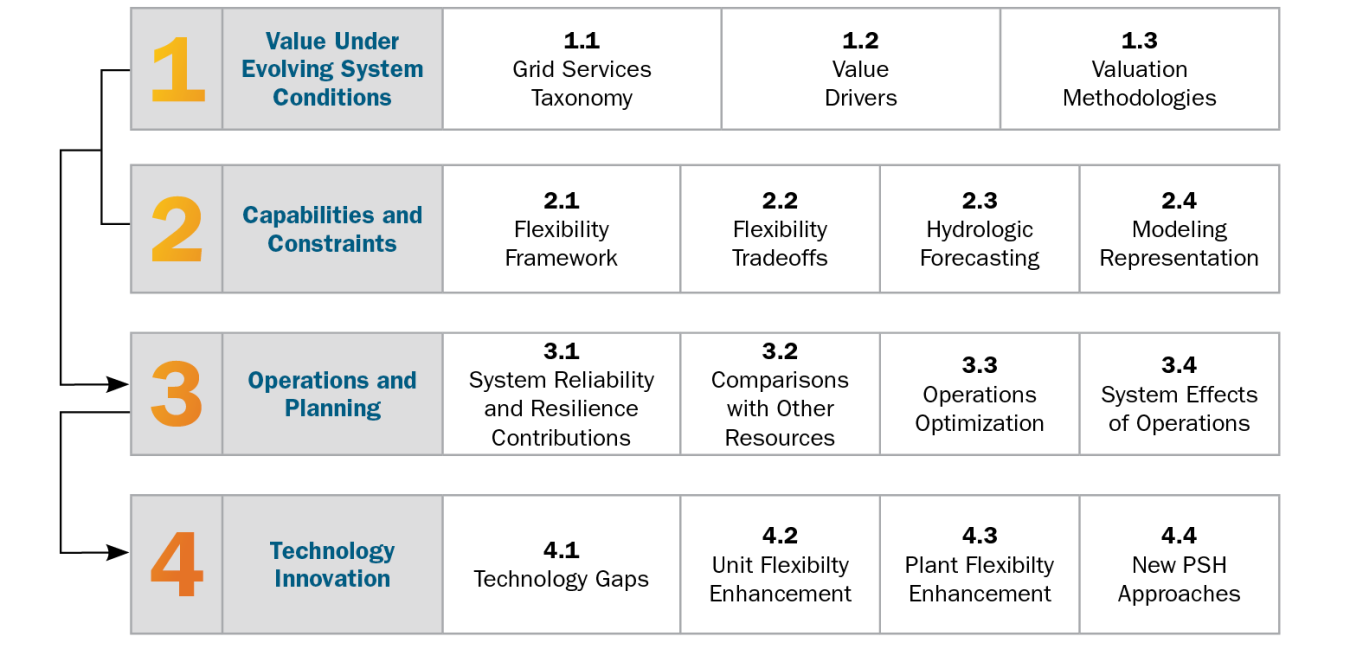The U.S. electricity system is changing fast, bringing both opportunities and challenges for hydropower. As more energy sources are added to the grid there's a growing need for resources that can store power or react quickly to keep the grid reliable. Hydropower, including pumped-storage hydropower (PSH), is not only a supplier of bulk, low-cost, renewable energy, but also provides large-scale flexibility and support for many types of electricity generation.
To better understand and support this role, WPTO create the HydroWIRES research areas with input from experts in hydropower and power systems. These areas were designed to tackle the most urgent industry challenges. While the topics build on each other, many projects and reports connect to more than one research area.

Research Area Technical Objectives

This area studies potential gaps created by changes to the power grid and how this can create opportunities for hydropower.
“What will the grid need?”
The grid is changing fast, making it hard to know which services and technologies will be required, how these needs will vary region, and how to set the right value for them. HydroWIRES will give the hydropower industry and grid operators tools, data, and analysis to understand how the ups-and-downs of power levels, distribution generation, market prices, transmission issues, and industrial electrification affect grid needs.
Exploring what hydropower can do to support the grid—and what might limit it from reaching its full potential
"What can hydropower do?”
Reservoir hydropower plants are some of the most flexible resources on the grid, but each plant's ability to operate can be limited by different factors. These include how much water is available (such as interconnected systems where plants rely on each other) and rules about using water for fish and wildlife, shipping, and recreation. HydroWIRES collects new and detailed data from across the U.S. hydropower fleet to study how flexible hydropower can be. This research helps find ways that individual plants and entire fleets can do more to support the electric grid.
Improving how hydropower is operated and planned —alongside other resources—to best support the electric grid.
“How can hydropower operations and planning be optimized for grid needs?”
Research Area 1 looks at what grid services will be needed in the future. Research Area 2 looks at what hydropower can do and what might limit it. Now, Research Area 3 brings these together to explore the best ways to use hydropower based on system needs.
Hydropower can provide many important services to the grid, but researchers still need to learn which grid services hydropower can deliver most effectively and affordably—and which services may be better handled by other energy sources. HydroWIRES supports this work by creating data and tools that help improve how hydropower is operated and planned. These tools help decision-makers—from project developers to grid planners—use hydropower in ways that strengthen the reliability and flexibility of the U.S. electricity system.
Support new technologies that improve how hydropower works with the grid.
“How can new hydropower and PSH technologies best meet new operational patterns?”
Hydropower is already used widely across the U.S., but there's still a strong need for new technology. Many plants in today's fleet were built to produce steady power in a narrow operating range. That can make them less flexible for current grid needs.
New PSH projects also face challenges. They can be expensive to build and take a long time to complete. HydroWIRES is working to develop and support new technologies that improve how hydropower and PSH can support a more flexible and reliable grid.


